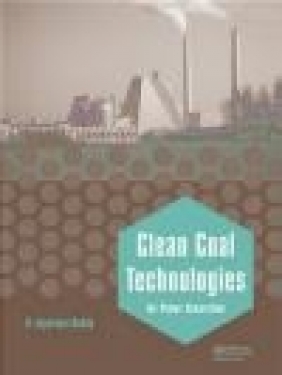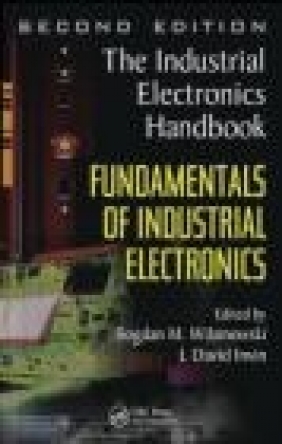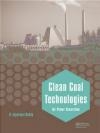Clean Coal Technologies for Power Generation
Jayarama Reddy
Clean Coal Technologies for Power Generation
Jayarama Reddy
- Wydawnictwo: CRC Press Inc.
- Rok wydania: 2013
- ISBN: 9781138000209
- Ilość stron: 326
- Oprawa: Twarda
Niedostępna
Opis: Clean Coal Technologies for Power Generation - Jayarama Reddy
This book discusses clean coal technology (CCT), the latest generation of coal technology that controls pollutants and performs with improved generating efficiency. CCT involves processes that effectively control emissions and result in highly efficient combustion without significantly contributing to global warming. Basic principles, operational aspects, current status, on-going developments and future directions are covered. The recent concept of viewing carbon dioxide as a commodity, and implementing CCUS (carbon capture, utilization and storage) instead of CCS for deriving several benefits is also discussed, as is the implementation of CCT in countries with large coal reserves and that utilize large quantities of coal for their energy supply. These countries are also the foremost CO2 emitters globally and their energy policies are crucial to international efforts to combat global warming. This work will be beneficial for students and professionals in the fields of fuel, mechanical, chemical and environmental engineering and Clean Tech. Includes foreword by Professor Yiannis Levendis, College of Engineering Distinguished Professor, Department of Mechanical and Industrial Engineering, Northeastern University, Boston, MA, USA.1. Introduction 2. Global energy consumption 2.1 Energy consumption by region 2.2 Projection into the future 2.3 World electricity generation 3. Coal: Formation, classification, reserves and production 3.1 Coal formation 3.2 Rank of coal 3.3 Composition 3.4 Structure of coal 3.5 Classification and analysis 3.6 Uses 3.7 Energy density 3.8 Global coal reserves: regional distribution 3.9 Global coal production 3.10 Coal production projections to 2035 4. Natural gas: Reserves, growth and costs 4.1 Composition and emissions 4.2 Formation and extraction of natural gas 4.3 Global natural gas reserves 4.3.1 Global production 4.3.2 Projection through 2035 4.3.3 Global consumption of natural gas 4.4 Unconventional gas reserves 4.4.1 Global shale gas production 4.4.2 Projection through 2035 4.5 Environmental concerns 4.6 Liquified natural gas (LNG) 4.7 Gas market analysis and prices 5. Pollution from coal combustion 5.1 Energy related CO2 emissions 5.2 Hazardous pollutants from coal 5.3 Impact on human health and environment 5.4 Control technologies 6. Coal treatment and emissions control technologies 6.1 Coal treatment 6.1.1 Introduction 6.1.2 Pre-combustion processes (coal benefaction) 6.1.3 Benefits of pre-drying 6.2 Emissions control technologies 6.2.1 Used during combustion 6.2.2 Post-combustion processes 7. Coal-based electricity generation 7.1 Conventional power generation plant 7.2 Steam properties 7.3 Steam generators/boilers 7.3.1 Early steam boilers 7.3.2 High pressure boilers 7.3.3 Performance evaluation of boilers 7.4 Steam turbine and power cycles 7.5 Steam condenser 8. Advanced coal-based power generation 8.1 Subcritical PC technology 8.2 Supercritical and ultra supercritical PC technology 8.3 Fluidized Bed combustion 8.3.1 Bubbling fluidized-bed units 8.3.2 Circulating fluidized-bed (CFB) units 8.3.3 Pressurized fluidized-bed combustion (PFBC) 8.4 Performance and cost comparison 8.5 Gasification 8.5.1 Chemistry of gasification 8.5.2 Generic types of gasifiers 8.5.3 Commercial gasifiers 8.5.4 Syngas clean up 8.5.5 Partial gasification combined cycle 8.6 Integrated gasification combined cycle 8.6.1 Process, plant structure and implementation 8.6.2 Environmental performance of gasification 8.6.3 Economics 8.6.4 R&D areas for improvement 8.6.5 Outlook for coal-based IGCC 8.7 Hybrid gasification 8.8 Underground coal gasification 9. Carbon capture and storage 9.1 Introduction 9.2 Transport and storage 9.2.1 Transportation 9.2.2 Storage 9.2.3 Estimated capacity 9.2.4 Storage times 9.2.5 Monitoring and verification 9.3 Capture technologies 9.3.1 Post-combustion capture (flue gas separation) 9.3.2 Pre-combustion capture 9.3.3 Oxy-fuel combustion capture 9.3.4 Energy price in capture technologies 9.3.5 Partial CO2 capture 9.4 Performance and costs 9.5 Policy framework to deploy CCS systems 9.6 Present status of capture technology 9.7 Advanced capture systems - costs and deployment projections 9.8 Technology roadmap for CCS 9.9 Retrofits for CO2 capture 9.10 Capture-ready units 10. Coal-to-liquid fuels 10.1 Chemistry of coal-to-liquid synthesis 10.2 Technology choices 10.2.1 Direct coal liquefaction 10.2.2 Indirect-coal-liquefaction 10.2.3 Comparison between DCL and ICL 10.2.4 Costs of DCL and ICL 10.2.5 Outlook for CTL 11. CCTs in developing countries 11.1 State of affairs 11.2 CCS in developing countries 11.3 China 11.4 India 12. Outlook for clean coal technologies Annexes
Szczegóły: Clean Coal Technologies for Power Generation - Jayarama Reddy
Tytuł: Clean Coal Technologies for Power Generation
Autor: Jayarama Reddy
Wydawnictwo: CRC Press Inc.
ISBN: 9781138000209
Rok wydania: 2013
Ilość stron: 326
Oprawa: Twarda
Waga: 0.74 kg






























